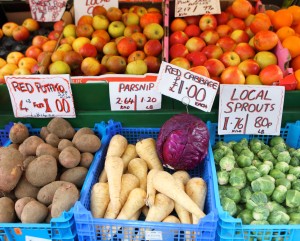As your body changes during perimenopause and menopause, so do your nutritional and exercise needs. A diet plan that worked well for years might not provide the nutrients you need at this stage of your life. And while you might have kept the extra pounds away with a haphazard exercise routine in your younger years, decreasing estrogen levels and increasing belly fat mean that it’s time to step up your game.
Good Nutrition is Key
Staying healthy during these years starts with making a few changes to your diet and exercise routine. These changes can help you avoid several common conditions related to aging. The good news is that a diet rich in nutrients can help you avoid or lessen the severity of these conditions and maintain better health. The following tips will help ensure that you’re getting the right mix of nutrients in your diet to help prevent and manage them:
Osteoporosis
Decreasing calcium levels during menopause can contribute to osteoporosis, a condition that causes bones to become weak, brittle and more likely to break.
Prevention tips:
- Make calcium a part of your daily diet. During perimenopause and menopause, you’ll need about 1,200 milligrams of calcium each day. In addition to milk and other dairy products, calcium is found in bok choy, kale, black-eyed peas, sesame seeds, leafy greens, fortified cereal, fortified orange juice, soybeans, fortified soy milk, canned salmon and sardines.
- Skip the junk food and replace it with vegetables and fruits. Try to eat 2 cups of vegetables and 1 ½ cups of fruit daily. During the summer months, stock up on seasonal produce from one of North Carolina’s many farmers’ markets.
Anemia
Anemia can occur when iron levels drop drastically. Anemia is a condition that happens when you don’t have enough red blood cells to carry oxygen to your tissues. If you have anemia, you may feel exhausted and weak. Lower iron levels aren’t uncommon during perimenopause and menopause. If your iron level is lower than normal but you don’t have anemia, you may still notice that you have less energy.
Prevention tips:
- Eat vitamin C rich foods such as fruit when consuming iron-rich foods to increase the iron absorption.
- Add three servings per day of iron-rich food to your diet. Spinach is probably one of the first foods that come to mind when you think of iron, but plenty of other foods contain this essential nutrient. Add iron by eating red meat, pork, poultry, peas, raisins, apricots, iron-fortified bread and cereal, and dark leafy greens.
High Cholesterol
Maintaining a healthy cholesterol level can become more difficult as you age. High cholesterol is particularly dangerous because it’s a risk factor for heart disease.
Prevention tips:
- Increase the amount of fiber in your diet. Fiber can help reduce your cholesterol level. Shoot for 21 grams per day and choose foods like oatmeal, bran flakes, whole wheat pasta, peas, Brussels sprouts, broccoli, lentils, black and lima beans, pears and avocados.
- Reduce unhealthy fats in your diet. Fat can also be a contributing factor in high cholesterol. Reduce the amount of food you eat that contains saturated and trans fats, like ice cream, cheese, butter and red meat. Cook with healthier monounsaturated and polyunsaturated fats, like corn, canola, soy or olive oils. Nuts, seeds and fish are high in this “good” type of fat.
In addition to these tips, drink water to avoid dehydration. The standard advice is to drink eight glasses of water each day, but don’t worry if that’s more water than you can handle. The Mayo Clinic points out that 20 percent of your water intake comes from the foods you eat.
Exercise Is Important for More Than Menopause Weight Loss
Exercise not only helps you maintain your weight or shed extra pounds, it also helps you build strong muscles and bones. If it seems as if you’re having more trouble than usual maintaining your ideal weight these days, you’re not imagining things. As you age, you lose muscle mass. Since muscle burns more calories than fat, your metabolism slows if you don’t make muscle-building exercise part of your fitness routine.
Build healthy bones and muscles and improve your metabolism with these exercise types:
- High-impact weight bearing exercises: Try activities like high-impact aerobics, tennis, volleyball, jogging, running, performing jumping jacks or jumping rope. Avoid high-impact exercise if you have osteoporosis or a joint condition or injury. Talk to your doctor if you’re not sure if high-impact exercises are right for you.
- Low-impact weight bearing exercises: Low-impact aerobics, elliptical and stair-step machines, walking, water aerobics, rowing machines and hiking all provide a low-impact aerobic exercise.
- Non-impact exercises: Swimming, bicycling, Yoga, Tai Chi and Pilates can help improve your flexibility and balance.
- Strength training exercises: Build muscles by lifting weights, using weight machines or using elastic resistance bands.
Adapting to the changing needs of your body during perimenopause and menopause will take some time and maybe even create a different mindset about food and exercise. But following a comprehensive diet and exercise routine will help you look better, feel better and have the stamina to continue doing the things you enjoy.
Sources:
Journal of Midlife Health: Exercise Beyond Menopause
Web MD: Menopause and Good Nutrition



